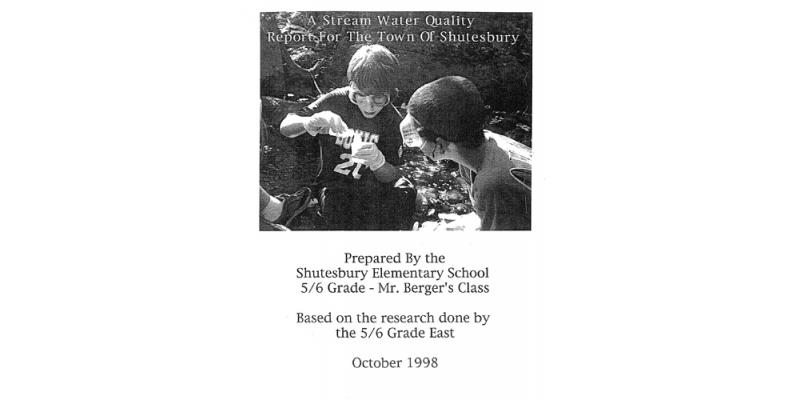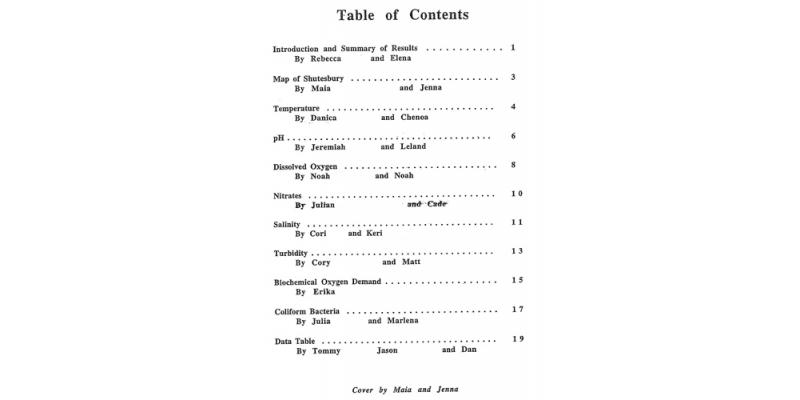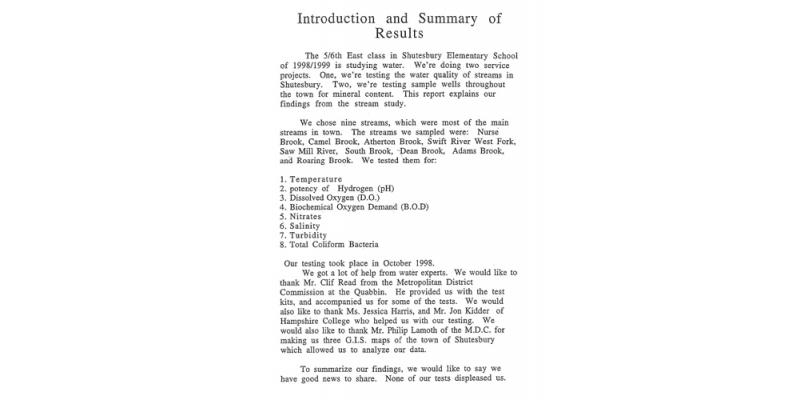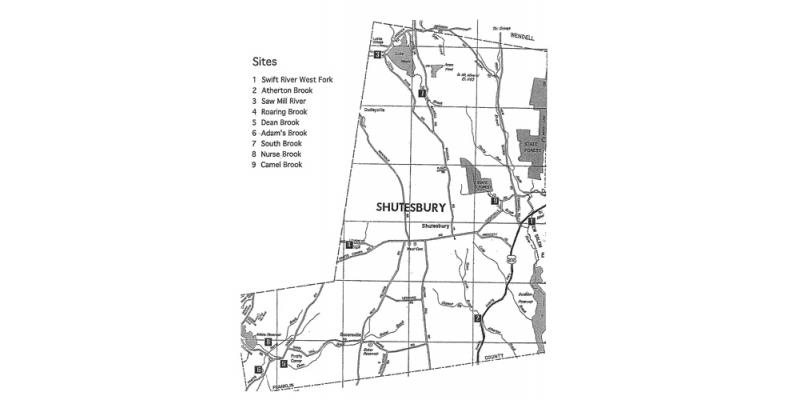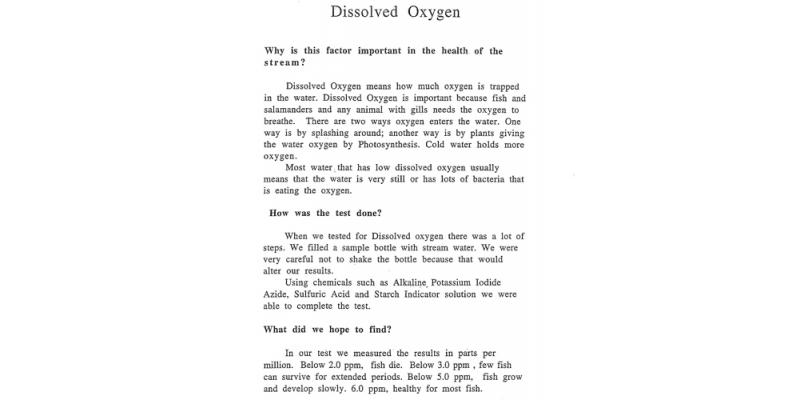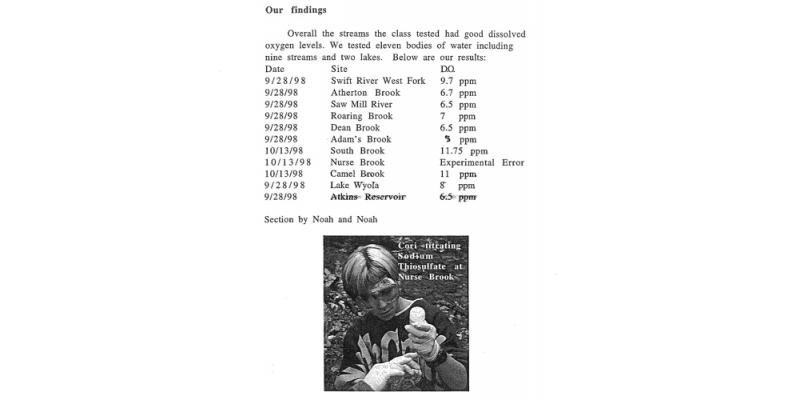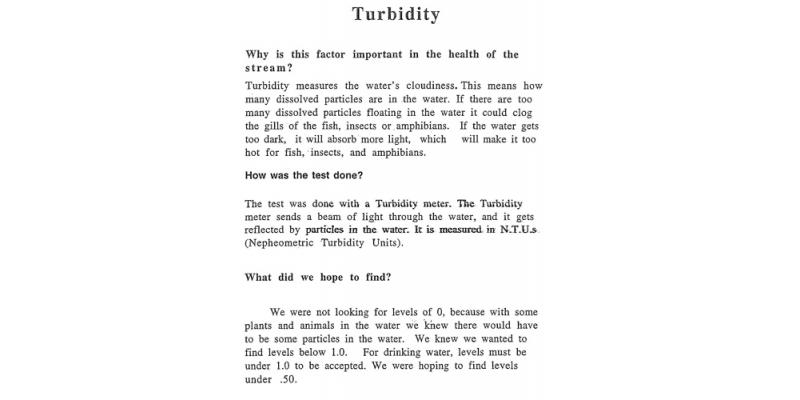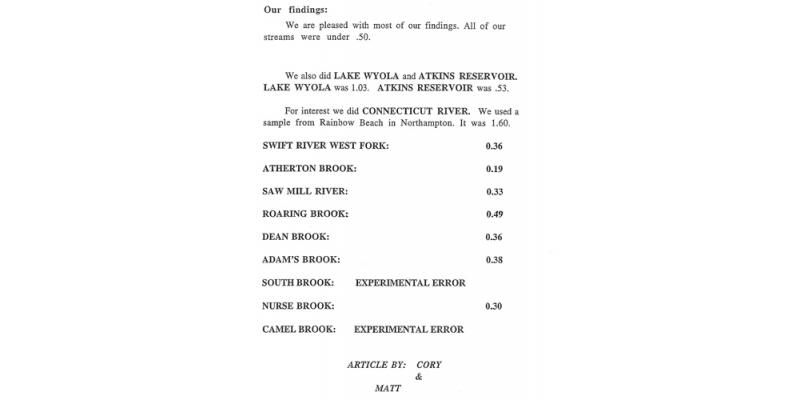Stream Water Quality Report
School: Shutesbury Elementary School
City/State: Shutesbury, MA
Grade(s): 5, 6
Format(s): Report: Science
Subject(s): Mathematics, Science and Technology, Social Studies
Project Overview
In the fall of 1998, 5th and 6th grade students from the Shutesbury Elementary School, in Shutesbury, Massachusetts prepared this report on the quality of surface water within the town, as part of a year-long learning expedition on water. The full expedition addressed state standards across a range of disciplines, including a study of ancient civilizations (using the lens of water resources); a study of the physics and chemistry of water and the geology of water resources; ecology and pollution; and a study of classic literature set in water environments. The service learning elements of the expedition involved students in running two research projects – testing the quality of surface water in town, and the quality of drinking water in town.
Using high school-level testing equipment borrowed from a state water agency, students partnered with undergraduate students from Hampshire College to examine the quality of the town’s surface water. Students tested for eight features of water safety in nine streams within the town – temperature, pH, turbidity, nitrates, dissolved oxygen, biochemical oxygen demand, salinity, and coliform bacteria. The focus of this study was more on the impact of water quality on plant and animal life and less about the impact on humans.
In addition to the undergraduates, students also worked with local water experts – state water officials, geologists, and well-diggers and plumbers. Students kept track of their data in part by using wall-sized, custom-made GIS maps of the town, created by state water officials in response to student parameters, and putting pins in the areas related to their study.
In the final report, for each of the eight areas of water quality, students provided information on the importance of the test, how it was done and their findings.
Students presented their findings to the town Board of Health and Conservation Commission, to the general town meeting. The report was posted in the town hall for many years. It remains the only comprehensive study of the health of the surface water in this town.
How This Project Can Be Useful
- Exemplifies students engaging in adult-level research
- The research project would be easy to do in any town or city, and requires only inexpensive testing equipment
- Exemplifies a project that had an important and real purpose – the project produced and conveyed important data and people really needed
- Demonstrates the power of real responsibility given to students
- A good model of a scientific report written and produced entirely by young students – language and data are simple but accurate
- Compelling example of service learning – a vital contribution that also entailed serious learning
- Demonstrates the capacity of elementary students to accomplish professional quality research and manage political relationships
- Highlights community partnership with local college, giving students the opportunity to become familiar with college-type experiences
- Powerful authentic audience – residents of the town
- Highlights a product that does more than just report data – students provide clear and accurate descriptions of why they collected the data and what they found
- Inclusion of class photo at the end helps to remind the reader of the age of these young scientists
- Provides a means for getting students excited about science and being scientists
Common Core State Standards
| Standard | Long Term Learning Target |
|---|---|
| W.5.4 |
|
| L.5.6 |
|
| W.6.2 |
|
| W.6.4 |
|
| L.6.1 |
|
| L.6.2 |
|
| L.6.6 |
|
| 6.EE.2 |
|
| WHST.6-8.2 |
|
| WHST.6-8.4 |
|
